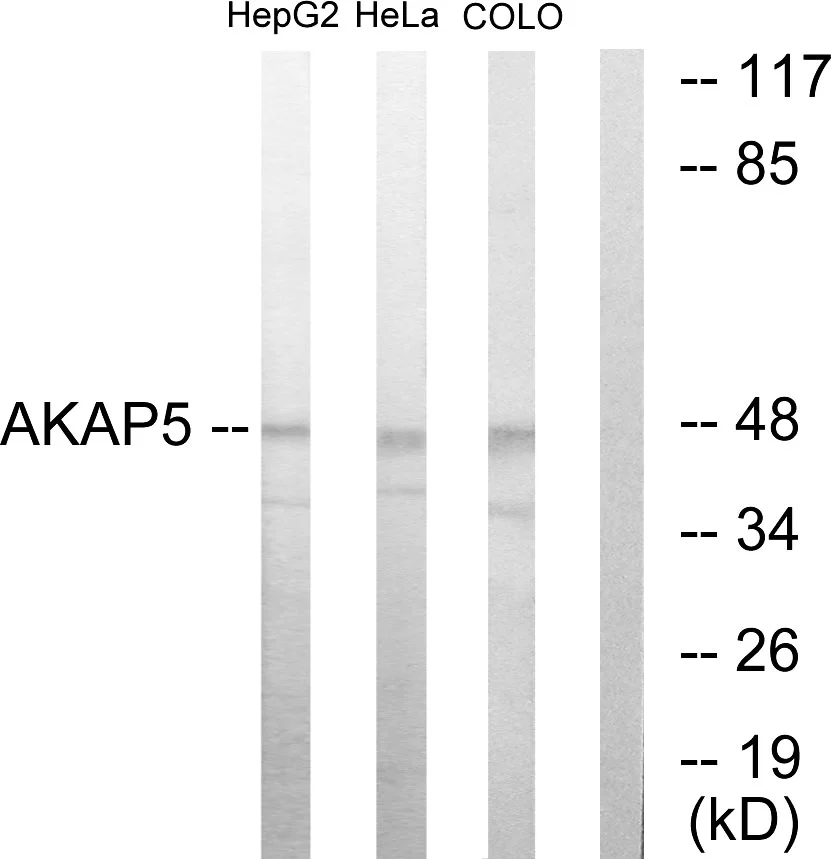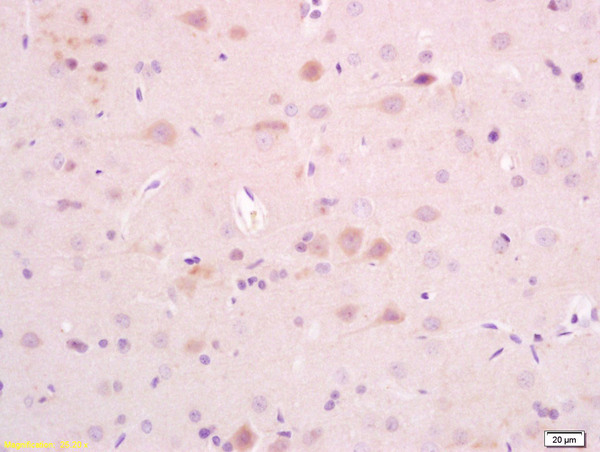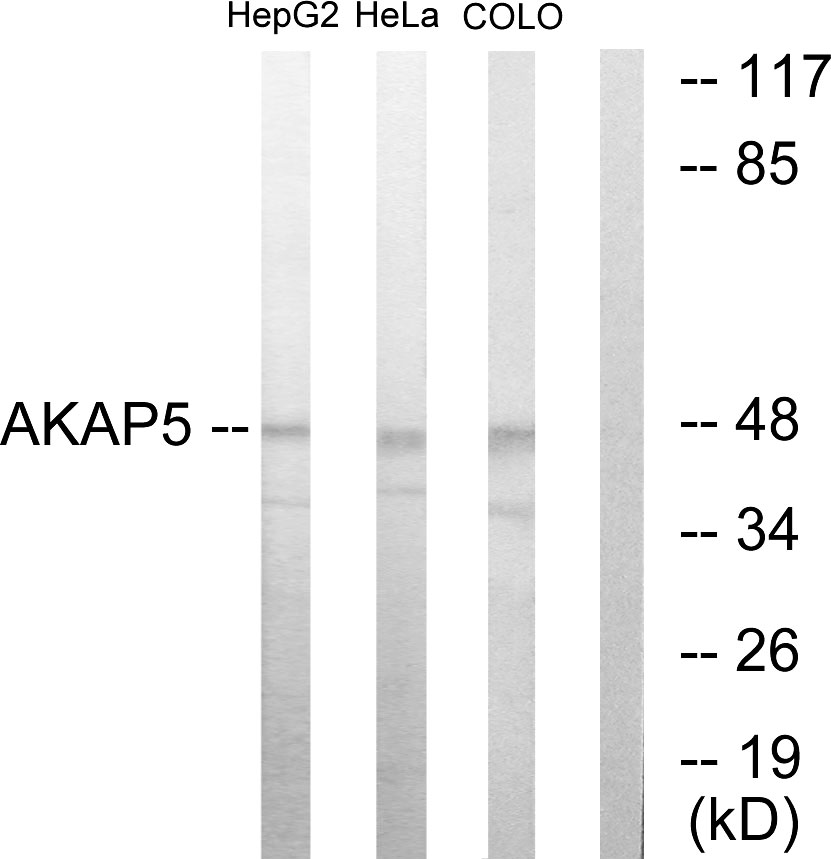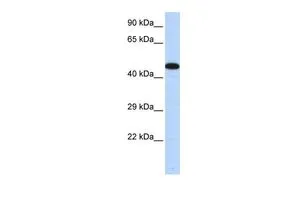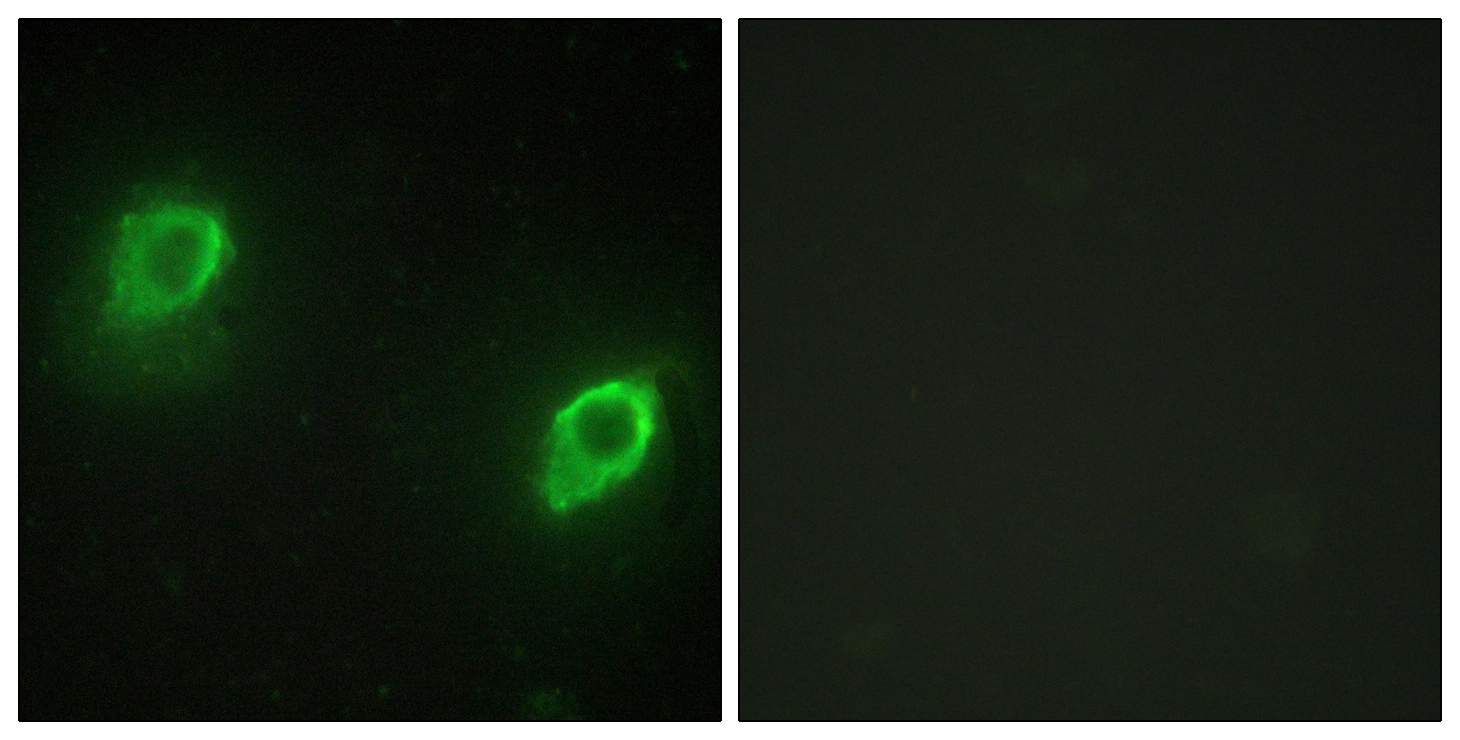
ICC/IF analysis of HeLa cells using GTX87532 AKAP5 antibody. The picture on the right is blocked with the synthesized peptide.
AKAP5 antibody
GTX87532
ApplicationsImmunoFluorescence, Western Blot, ImmunoCytoChemistry
Product group Antibodies
ReactivityHuman
TargetAKAP5
Overview
- SupplierGeneTex
- Product NameAKAP5 antibody
- Delivery Days Customer9
- Application Supplier NoteWB: 1:500~1:1000. ICC/IF: 1:100~1:500. *Optimal dilutions/concentrations should be determined by the researcher.Not tested in other applications.
- ApplicationsImmunoFluorescence, Western Blot, ImmunoCytoChemistry
- CertificationResearch Use Only
- ClonalityPolyclonal
- ConjugateUnconjugated
- Gene ID9495
- Target nameAKAP5
- Target descriptionA-kinase anchoring protein 5
- Target synonymsAKAP75, AKAP79, H21, A-kinase anchor protein 5, A kinase (PRKA) anchor protein 5, A-kinase anchor protein 79 kDa, A-kinase anchoring protein 75/79, AKAP 79, cAMP-dependent protein kinase regulatory subunit II high affinity-binding protein
- HostRabbit
- IsotypeIgG
- Protein IDP24588
- Protein NameA-kinase anchor protein 5
- Scientific DescriptionThe A-kinase anchor proteins (AKAPs) are a group of structurally diverse proteins, which have the common function of binding to the regulatory subunit of protein kinase A (PKA) and confining the holoenzyme to discrete locations within the cell. This gene encodes a member of the AKAP family. The encoded protein binds to the RII-beta regulatory subunit of PKA, and also to protein kinase C and the phosphatase calcineurin. It is predominantly expressed in cerebral cortex and may anchor the PKA protein at postsynaptic densities (PSD) and be involved in the regulation of postsynaptic events. It is also expressed in T lymphocytes and may function to inhibit interleukin-2 transcription by disrupting calcineurin-dependent dephosphorylation of NFAT. [provided by RefSeq, Jul 2008]
- ReactivityHuman
- Storage Instruction-20°C or -80°C,2°C to 8°C
- UNSPSC12352203

